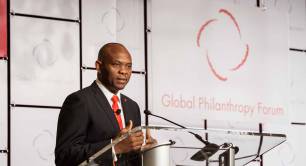Why don't DFIs provide the funding that early-stage entrepreneurs so desperately need?
AWKWARD QUESTIONS: Development finance institutions make a lot of noise about addressing the needs of small and growing businesses and 'investing where others will not'. Yet they've set up investment standards that all but guarantee that their dollars flow to megafunds and big, profitable companies that don't really need their help, rather than the 'missing middle', says VC investor Jesse Clain.
In the fight to accelerate economic development in the poorest parts of the world, development investors aren’t using the most powerful tool at their disposal: venture capital.
Last year I moved from San Francisco to Somaliland (one of about 30 countries classified as low income) in order to start a VC fund. I’d been working in VC in Silicon Valley, and before that I was a high school teacher in Somaliland. I knew that there were massive opportunities in Somaliland that were being ignored.
One story I couldn’t get out of my head was the story of a Somalilander who got two computer science degrees from MIT, then went back to Somaliland to start a tech company. In the Bay Area, VCs would have thrown money at him. But there was zero VC investing in Somaliland and Somalia, so he couldn’t start his business here.
The lack of availability of venture capital in low-income countries is exactly the kind of problem DFIs are supposed to solve
What makes venture capital special is not the financial returns it produces for investors – which are higher risk but on average roughly equal to more conservative forms of investment, like debt – but what it unlocks for entrepreneurs and their communities.
Why can't DFI contribute to the 'missing middle'?
Venture capital changes the scope of what entrepreneurs can build. Instead of being restricted to what’s proven to work in the past, VC-backed founders can envision a better future, produce evidence that shows that that future is possible, and then get an investment from a VC that allows them to quit their jobs and work full-time on building that future. Venture capital is a key ingredient for virtually every transformative company that’s been created in the last 30 years – from Tesla to Tencent to Nubank.
But in most low-income countries, venture capital is basically non-existent.
Entrepreneurship is common, to be sure. In fact, entrepreneurship rates tend to be higher in low-income countries than in wealthier countries. That sounds like a good thing, but it probably isn’t. Many people in low-income countries are entrepreneurs by necessity, because there are so few opportunities for formal employment. In order to make enough money to feed their families, people start small shops that sell the same goods as all the other shops on the street, and they make just enough money to stay afloat. Without venture capital, it’s hard to build the kinds of ambitious, scalable businesses that produce a significant number of jobs.
It’s nearly impossible for an entrepreneur in a low-income country who’s not independently wealthy to found and build a scalable startup
The lack of availability of venture capital in low-income countries is exactly the kind of problem development finance institutions (DFIs) are supposed to solve. (See, for example, how Norway's Norfund describes itself.) But even though DFIs provide billions of dollars of capital every year to underinvested parts of the world, they do almost nothing to support early-stage entrepreneurs in need of venture capital. This is a large component of a financing gap that development investors often call “the missing middle”.
They call it that because DFIs and other institutional impact investors are good at providing capital on the low end – usually by funding financial intermediaries who provide small loans for non-scaling SMEs with solid track records and collateral.
And they’re good on the high end, where they invest US$5-50M in mature private funds, or in profitable large businesses, or in joint infrastructure projects with multinational companies.
But they do almost nothing in the middle – especially in the realm of venture capital. There’s a huge financing hole for companies seeking between $20k and $3m.
DFC, the DFI of the United States, is a stark example of this problem. DFC has invested $18.8b in the last three years. Yet going back to 2015, DFC has made equity investments or fund investments of less than $3m only three times for a combined total of $4.75m. Over that same period, they’ve made 16 equity and fund investments that were between $50m and $100m, for a combined total of $884.8m dollars.
The result of the missing middle is that it’s nearly impossible for an entrepreneur in a low-income country who’s not independently wealthy to found and build a scalable startup.
Capacity constraints
So why don’t DFIs fund these things?
The short, unsatisfactory answer is “capacity constraints”. The longer answer is this.
Large DFIs have hundreds of millions or billions of dollars that they have to invest every year. They employ a small number of investors, mostly in relatively wealthy cities like Nairobi and Johannesburg.
It’s a long, difficult process for DFIs to make any kind of investment. Before an investment is made, companies have to go through impact scoring, ESG consultations, and multiple rounds of presentations before large investment committees. From my conversations with current and former DFI employees, fund managers, investors, and service providers for DFIs, the process tends to take 12-26 months. One fund manager operating in East Africa for five years was told by a DFI that it would take them nine months to review his deck.
This timeline comes with heavy penalties. Let’s say an early-stage startup from Ethiopia approaches a DFI investor seeking capital. Even if the investor wants to make the investment – and many of them do – they can’t do it because of capacity constraints. It’s simply not feasible under current conditions for a DFI employee to go through their intensely burdensome 18-month investment process to maybe one day write a $50k or $100k cheque.
The current incentives imposed by DFI policies all but force Africa-focused investors to concentrate capital in chunks of $5k+ to mature companies and funds clustered around Nairobi, Cairo, Lagos, Johannesburg, and Cape Town.
That’s a big problem. Funding startups in low-income countries is probably the most important and neglected thing we can do in development finance. We shouldn’t give up on it just because DFIs find it easier to invest $20m in a mature megafund in Lagos than to invest smaller amounts in startups in Malawi and Ethiopia. And we can’t give up on DFIs – they’re by far the largest providers of development finance. So what can we do to change them?
We need to dramatically reduce the diligence thresholds and minimum cheque sizes of major development finance providers
The public isn’t privy to most discussions that happen at the executive level of large DFIs or in the government bodies who oversee them. Each DFI has different governing dynamics and different ways of defining their risk tolerance in spending public funds. But there are solutions from the world of private investing that we can implement.
The primary solution is to dramatically reduce investment timelines and diligence requirements for prospective investees.
This is challenging, because it’s easy to say “let’s have higher hurdles for impact measurement” and it’s hard to say “let’s have lower hurdles for impact measurement”. But however well intentioned, DFIs’ gruelling diligence process has the effect of crowding out startups and outsiders, and crowding in wealthy, connected, bureaucratically savvy companies who don’t really need DFI money anyway.
By enabling DFIs to make investment decisions in days or weeks (as private investors do) instead of quarters or years, we can bring down the cost of making an investment, which allows DFIs to reduce their cheque sizes. If they can make an investment in three weeks instead of 15 months, a $100k investment in an early-stage startup is no longer a colossal waste of time. Suddenly it’s viable.
Another practice DFI investors can take from private investors is to invest in more fund managers as a way to increase coverage. Rather than restricting themselves to the relatively wealthy cities where their employees live, investing in fund managers focused on low-income countries in need of capital gives DFIs the tools to make a difference in the places that most need development finance.
If we want to solve the problem of the missing middle, the path forward is clear: we need to dramatically reduce the diligence thresholds and minimum cheque sizes of major development finance providers, which make it nearly impossible to invest in early-stage companies and low-income countries. Development finance institutions are meant to be high-risk, high-impact investors. Let’s help them fulfil their mandate.
- Jesse Clain is a general partner at The Takeoff Fund, and is based in Somaliland.
Thanks for reading our stories. As an entrepreneur or investor yourself, you'll know that producing quality work doesn't come free. We rely on our subscribers to sustain our journalism – so if you think it's worth having an independent, specialist media platform that covers social enterprise stories, please consider subscribing. You'll also be buying social: Pioneers Post is a social enterprise itself, reinvesting all our profits into helping you do good business, better.



